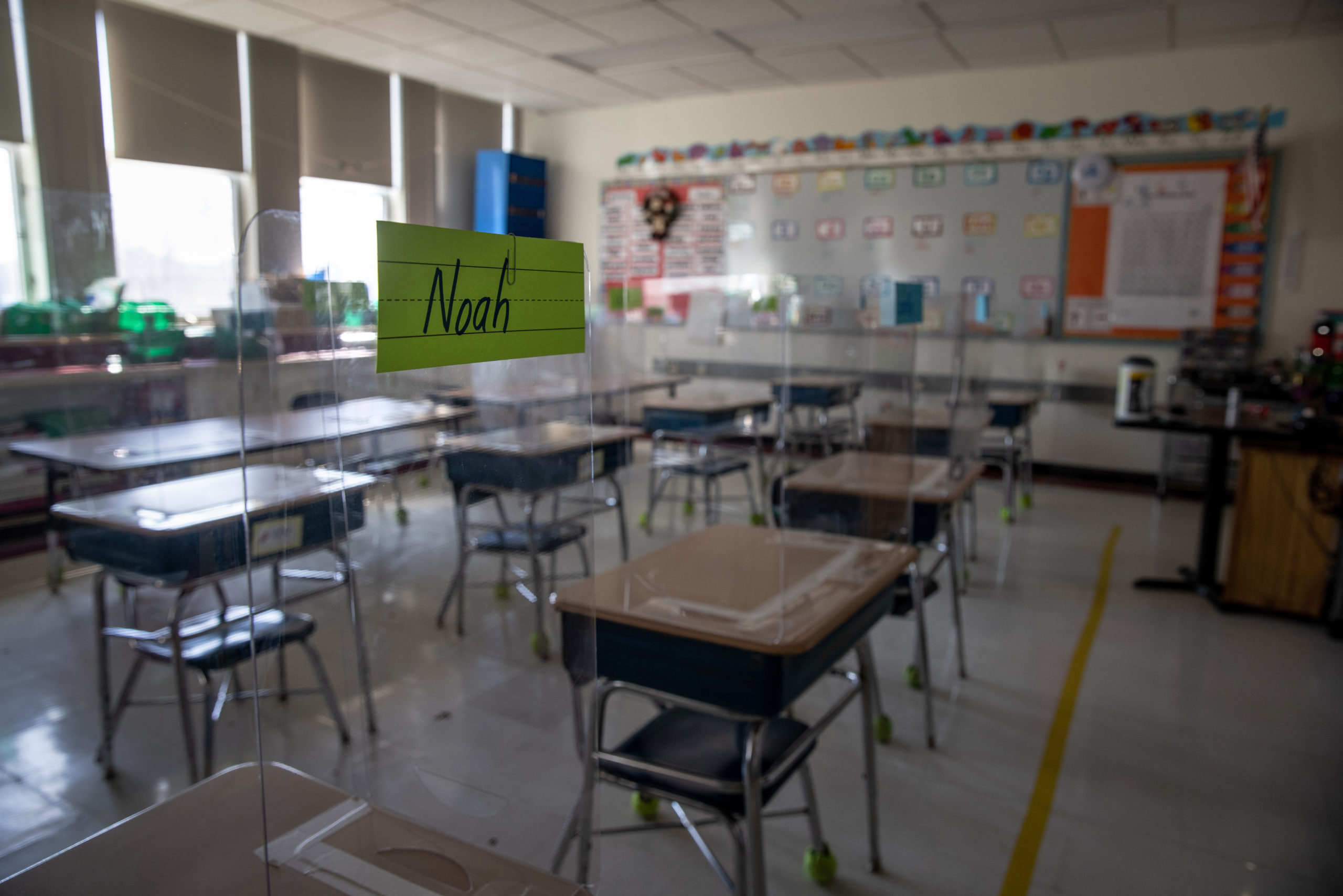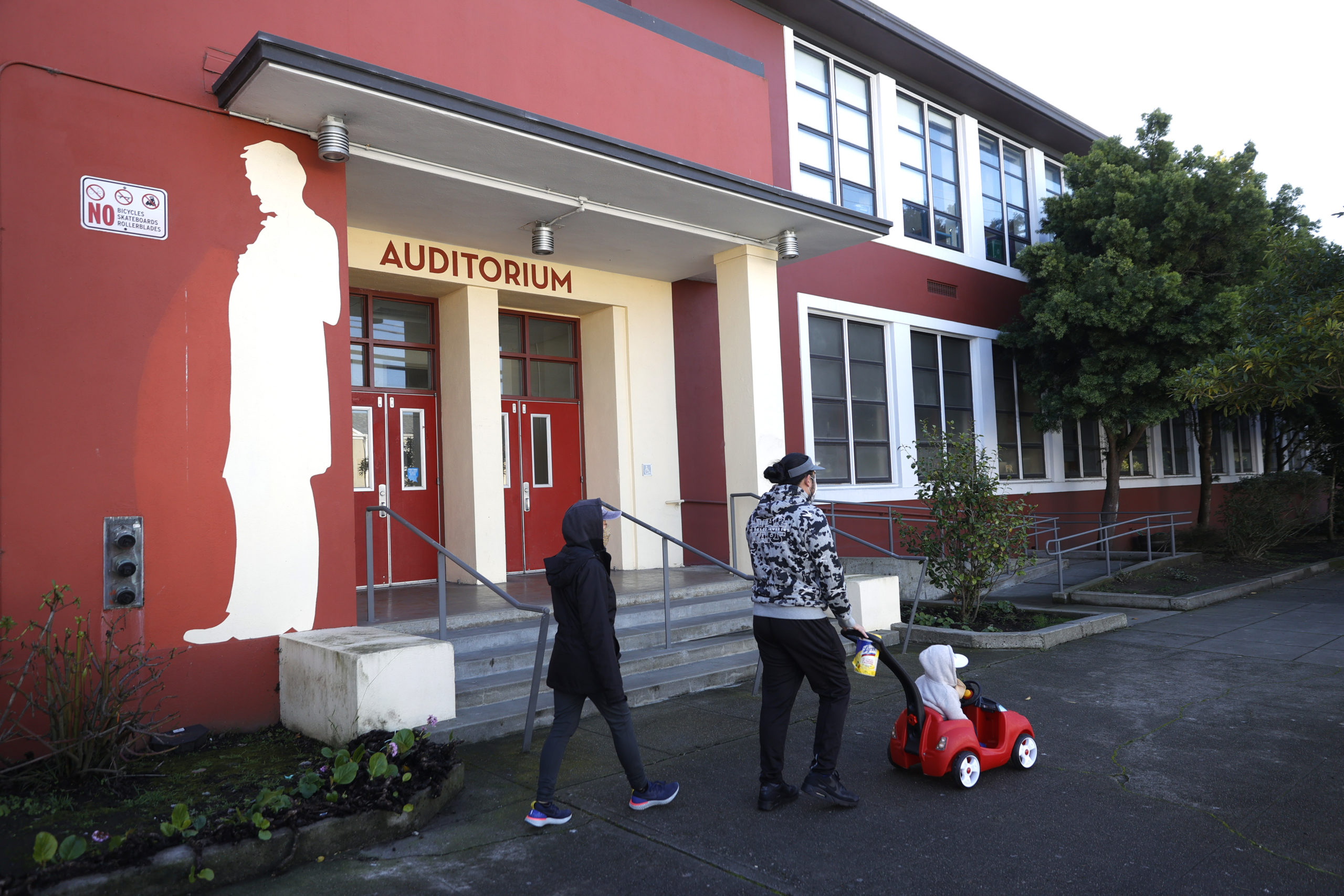Most public middle and high schools in Maryland have seen a pronounced increase in fail rates throughout the time period that classrooms were closed, a report from the state’s board of education showed.
The report, released Monday, includes performance metrics from mid-November 2020 until January 2021, when most of the state’s largest districts were closed for in-person instruction. The report shows that 23 of 24 (nearly 96%) Maryland public middle school districts saw an increased fail rate in every subject.

Plastic dividers stand on classroom desks, due to pandemic protocols, before the first day of in-person learning for five days per week at Stark Elementary School on March 10, 2021. (Photo by John Moore/Getty Images)
High school students in the state’s public school system also suffered increased fail rates. The report shows 21 out of 24 school districts had increased fail rates in math, while 19 districts saw increased fail rates in social studies.
Among middle schools, 11 school systems saw math fail rates approximately double, while 9 systems had English and social studies fail rates double, charts in the report show. In high schools, 11 systems had English fail rates double, while 15 had science fail rates double. Several middle school districts saw fail rates triple.
Republican Maryland Gov. Larry Hogan required all of the state’s school districts to return to some form of in-person or hybrid instruction by March 1, prompting many of the state’s districts to begin a phased reopening.
Teachers unions pushed back on Hogan’s effort. Baltimore-area unions said they would demand sticking to virtual learning until teachers are fully vaccinated and schools have implemented new air filtration systems, according to the Baltimore Sun.
Montgomery County Public Schools, among the largest districts in the state, began reopening schools for students in special education and other specific programs on March 1. Some schools reopened for in-person instruction for part of the week.
Earlier in February, the Centers for Disease Control and Prevention (CDC) issued a guidance recommending a return to in-person instruction, except for communities with very high transmission rates. The CDC also said that teachers do not need to be vaccinated for schools to reopen, which the agency reaffirmed in a study on school transmission while adding that vaccination should be a mitigation measure when available.

Pedestrians walk by a mural of Abraham Lincoln outside of Abraham Lincoln High School on December 17, 2020 in San Francisco, California. (Photo by Justin Sullivan/Getty Images)
Virtual learning has upended the critical sense of stability in children’s lives that can come from established learning schedules, seeing peers, or participating in extracurricular activities, leading to a sense of alienation among students, and often contributing to worsening grades. (RELATED:San Francisco Sues Its Own Schools For Creating Mental Health Crisis Among Students By Remaining Closed)
In San Francisco, the city’s attorney sued the school district in February to push it to reopen, citing a record number of suicidal children and worsening mental health among students due to continued school closure.


